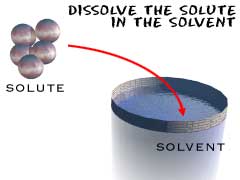Today we learned how to convert between hydrogen concentration, hydroxide concentration, pH and pOH. We were able to convert between all of these using one original given value.
This picture shows how to get from each value to the next in simple problems.
Some problems require more than one step in order to get the answer. For example, if you are given the concentration of hydronium ions and asked to find the pH, then you need to find the concentration of hydrogen ions, or the pOH first.
This site helped me practice the conversions from this lecture.
We recently covered the difference between acids and basis, which I had some prior knowledge on. I learned that Acid and Bases can be defined in two ways, Arrhenius and Bronsted-Lowery. The major difference between the two is shown below.
Arrhenius:Acids produce hydrogen ions in solution (H+)Bases produce hydroxide ions in solution (OH-)
Bronsted-Lowery:Acids donate a proton (H+)Bases accept a proton (OH-)
While grasping this concept, I found this link helpful
Today in class we completed an aqueous solution lab. We performed this lab to see how the concentrations of the solutions change in a serial dilution. We began the lab with 20 drops of food coloring in 10 mL of water. For the next solution we took 1.0 mL of the previous solution and added it to 9 mL of water. We continued this until the food coloring was no longer visible.
Molarity is the molar concentration of a substance. Use the picture below to help you find the molarity. This link gives you practice on how to find the molarity.
Solutions are made up of two parts the solute and the solvent. The solute is what is dissolved in the solvent. The solvent is part of the solution that is in the largest quantity.
There is a limit on how much solute can be dissolved in the solvent. There are three stages of how much solute can be dissolved in a solvent: unsaturated, saturated, and supersaturated. The graph below is a solubility curve this shows what compound is unsaturated, saturated, and supersaturated.
This link shows you how to read a solubility curve and gives you some practice reading them.

